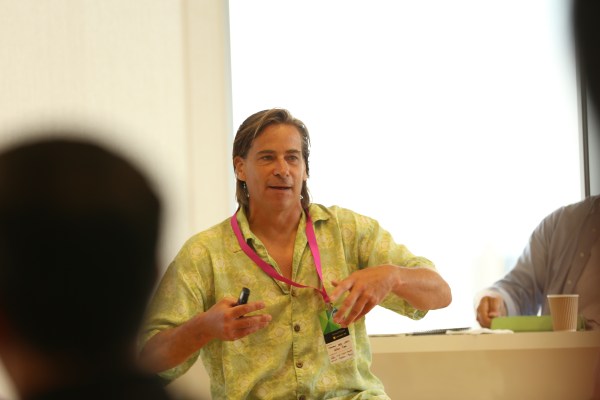At Startup Festival in Montreal this week, today saw a Lean Workshop hosted in part by Lean Entrepreneur authors Brant Cooper and Patrick Vlaskovits. The two entrepreneurs and authors spent the morning articulating what makes for a lean entrepreneur or startup, and how lean tactics can apply to companies big and small. The talk was exhaustive, but a couple highlights stood out around what’s meant when people talk about minimum viable products in lean startups, and how to get from there to something that creates the kind of passion that turns consumers into advocates.
Minimum Viable, Not Nearly Viable
The minimum viable product, or MVP, is not just something broken you release because it’s easy, according to Vlaskovits. It’s about targeting your ideal early adopter customer and getting them to help you build a product that can truly impress and succeed with a broader market. Too often people seem to think that an MVP can be a barely cobbled together thing that only sort of works; per Vlaskovits and Cooper, it’s more about staying true to the idea of a “minimum viable product” and what those words literally mean.
“An MVP doesn’t have to be perfect,” Vlaskovits said. “But it has to be good enough to be viable to that particular market segment and its early adopters.” Once you’ve got those early adopters, they then start pulling the product out of you, by directing development efforts with feature requests. But getting those early adopters isn’t about creating something that invites droves of users; it’s about creating an experience that insists early users have “some skin in the game,” as you want them to be invested.
This means specifically trying to filter out users who aren’t your target audience, the authors said. While it can be tempting to just try to net as many users as possible, that’s actually not productive of good results. Cooper said that he often talks to entrepreneurs who want ways to get thousands of customers, but that that’s not really what they need. They actually need one; in other words, it’s better to genuinely reach a few who will help you make something lasting, than reach many who have no reason to stick around.
From Meeting To Exceeding Expectations
Once you’ve got those early adopters invested and helping with product direction, the next step is to start bringing customers along a line of emotional responses that brings them from potential conversions to passionate users; a passionate user is one who will actually recommend your product to others, unbidden, and that takes much more than just doing the basic work of building a product that satisfies its basic conditions of functionality.
“Thinking that the product is going to do it [alone] is the biggest trap,” Vlaskovits said in response to a question about what prevents people from reaching this state with their products. “Featuring yourself to death,” he called it. That kind of bloat is something anyone who follows startups and consumer products will likely be aware of, but it’s a natural place to focus efforts, especially for engineers who are used to making things. But it’s about an entire experience, and fleshing out product with marketing, with sales experience and process, and with everything else that comes after you’ve done the basic work of identifying and helping with a shared pain point that exists in your target market.
Vlaskovits and Cooper are all about pushing startups to iterate, and to focus less on big picture visionary tactics and more on hard, gradual work. They didn’t offer up any magic bullet solutions during their presentations, but they did provide useful guidance about how to actually make things that people want and will use.
